Alan Parfitt organised a visit to the RSPB’s Otmoor reserve on Saturday 4 December. It was a bright but chilly afternoon with a cold north-easterly wind. The track from the car park started out westwards for a short distance, then turned northwards into the reserve. To the left of the track was a damp pasture with scattered shallow pools. A group of Teal were feeding on one of the closest pools. On the right was a scrubby field which was becoming more and more overgrown. Alan pointed out a recently cleared scalloped section next to the path where a thicket of Blackthorn had been cut down to the ground. This particularly benefits the rare Brown Hairstreak butterfly which likes to lay its eggs low down on young Blackthorn. Black Hairstreak, which is even rarer, can also be found at the Otmoor reserve, where it favours sunny and sheltered dense stands of Blackthorn. The management plan is to cut the whole area over a 15-year cycle. A number of bird feeders were hanging from an oak near the end of the track. These were being visited by a constant stream of Blue and Great Tits, plus a few Chaffinches. The track crossed a bridge and climbed up to a causeway. Beyond was a gateway opening onto an extensive area of wet grassland crossed by a network of ditches. Before the RSPB purchased the reserve, this area was used as arable land. Small parties of Greylag and Canada Geese were grazing nearby, several Magpies were down on the grass and a Red Kite soared overhead. Continuing westwards along the track which ran along the top of the causeway, the group paused from time to time to scan the pasture to the north. A distant Kestrel flew over the field, hovering now and again. A pair of Stonechats perched on the tall vegetation on the side of a ditch, then flew down and back up from time to time. Four Roe Deer were grazing out in the open and a distant Marsh Harrier patrolled over the reed beds. A big flock of waders wheeled across the sky, separating out into larger and darker Lapwings below and paler Golden Plovers above.
There followed a brief diversion along a track on the left which led to a hide which looked out over the damp pastures and shallow pools on the southern side of the reserve. Alan pointed out the area where Cranes had bred earlier in the year, successfully raising Otmoor’s first chick. The low afternoon sun illuminated a small party of Reed Buntings which were sheltering in the hedge beside the hide. The males looked very smart with their black bibs and caps. They were joined by a Dunnock, a Blackbird and a Chaffinch. A Muntjac Deer was spotted in the adjacent field corner. Returning to the causeway, a sign pointed along the track to the north to the best viewpoint for the Starling murmuration. It led to a hide and a viewing area overlooking a shallow pool and the main reedbeds. On the pool were a Swan and two fully-grown cygnets, plus small numbers of Mallard and Teal. A Little Egret stood hunched on the mud at the edge of a small island. Two Snipe foraged at the edge of an even smaller island, almost under the feet of a resting Mallard. A Kingfisher flew low across the pool in front of the hide. A little later, two Kingfishers flew back in the opposite direction, then a few Lapwings settled on the mud at the side of the pool. The sun set and the light slowly dimmed. Then a loud cackling was heard, announcing the approach of a big flock of geese. This was followed by a mixed flock of waders. Then finally the first big flock of Starlings arrived. They were joined by a number of smaller groups of birds as they flew in their twisting, weaving aerial display before spilling down into the far side of the reedbed. For over half an hour, a succession of flocks flew in, performed their aerial manoeuvres, then flew down into the reed bed. Some flocks looked like fat caterpillars up in the sky, others like long thin snakes. Disappointingly, only one flock flew really close to the hide. As the number of Starlings in the reedbed increased, the sound of their chattering calls became louder and louder. Finally, a brisk walk back to the cars in the gathering darkness helped to restore a little warmth to frozen fingers and toes.
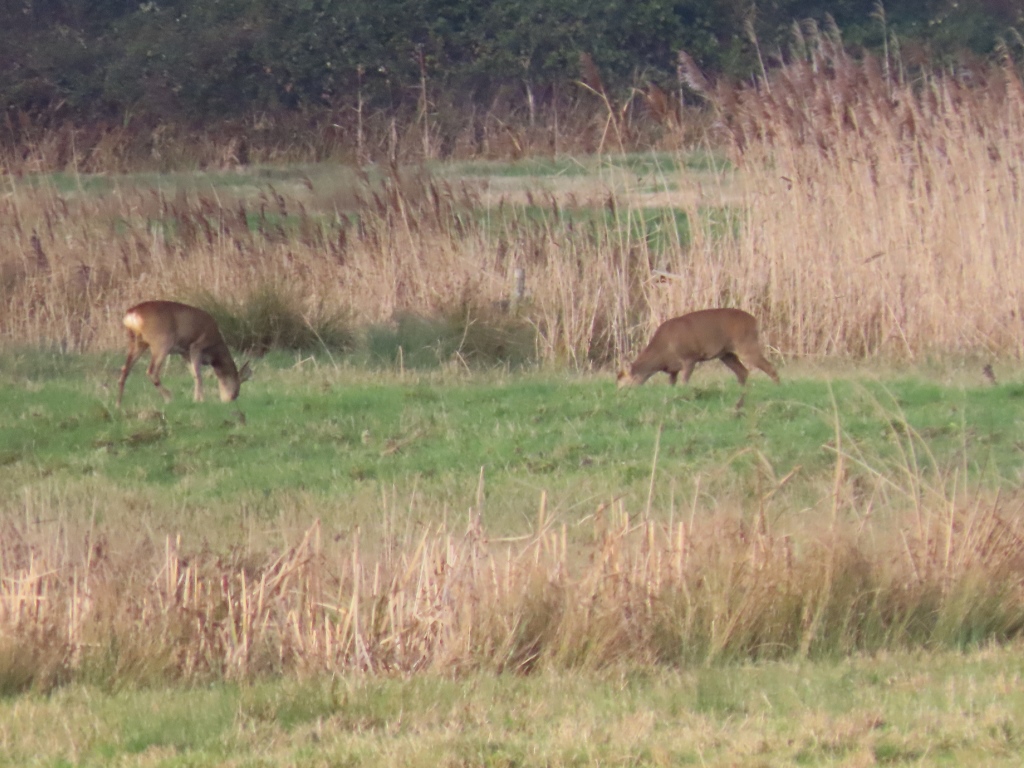
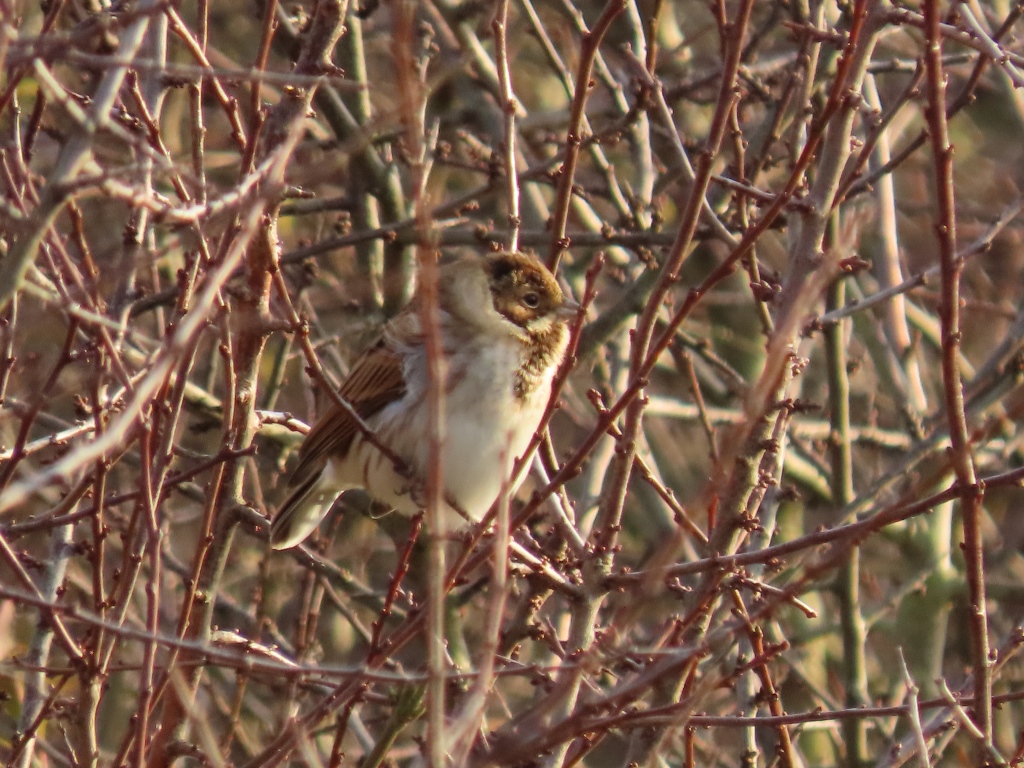
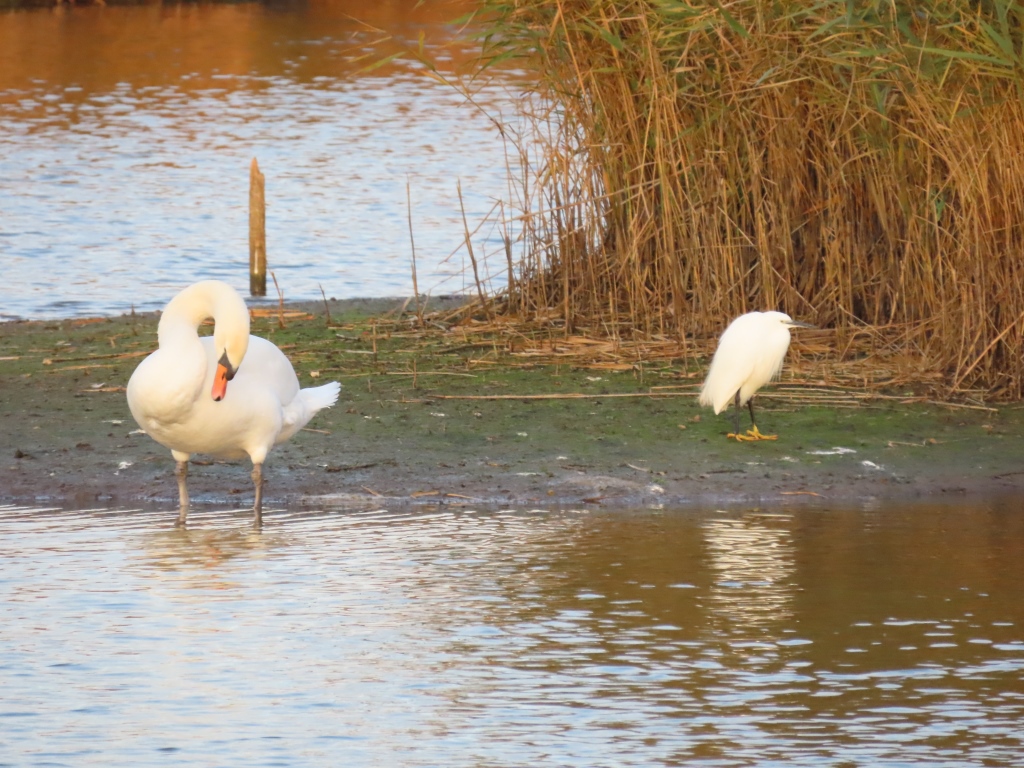
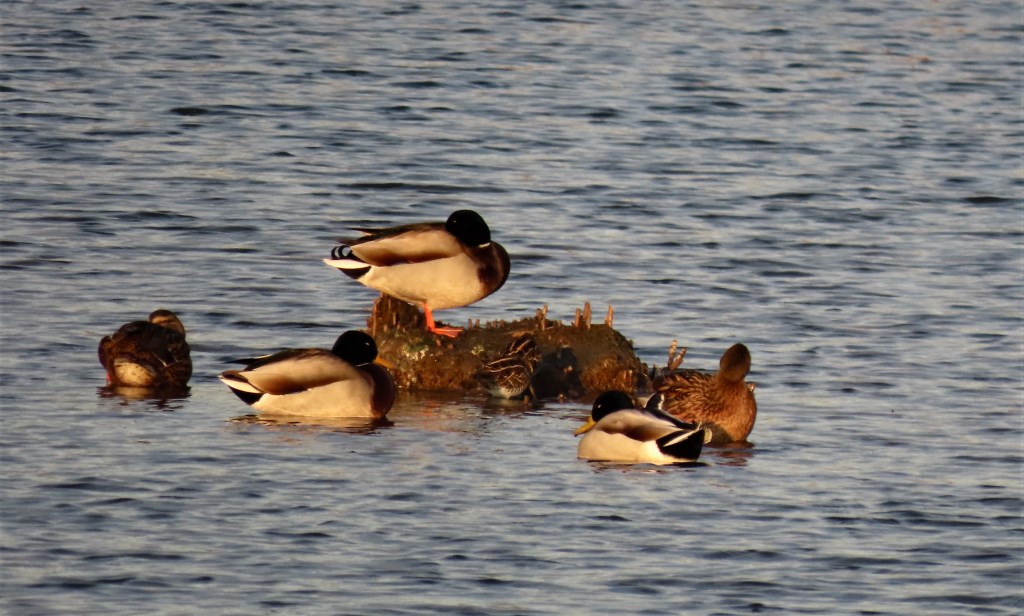
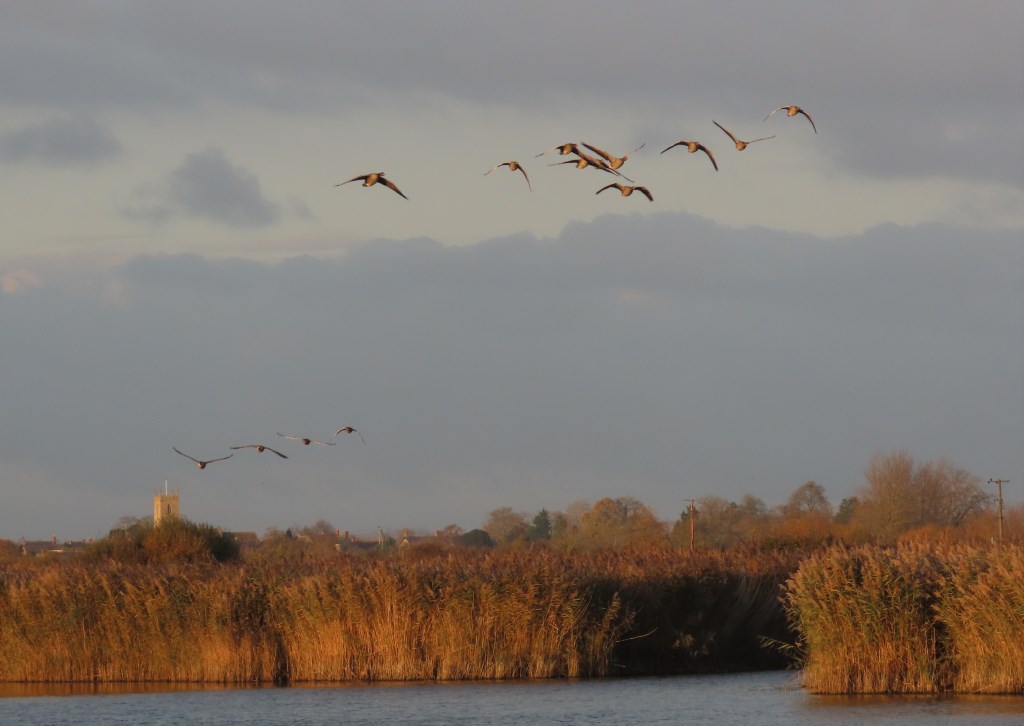
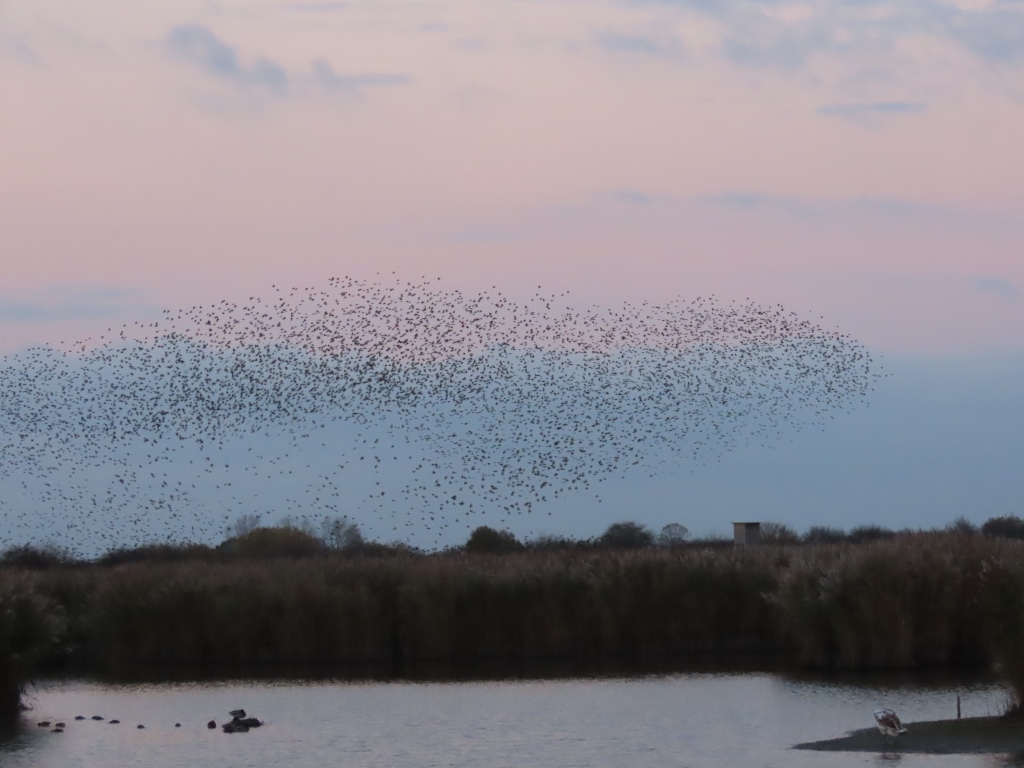
Pictures by Fiona Brown
